In the last three posts I have provided a comprehensive overview of the Santiagueros dance. Today I will focus on Santiaguero and Pilato masks by a single carver, Narciso Iturbide Charo, of San Antonio Rayón, Puebla. In an older post that compared decorative (meaning invented, non-traditional, and falsely presented) masks with somewhat similar masks that are traditional and authentic, I included one of the three-faced Santiaguero masks that was carved by Narciso (see my post of August 25, 2014). Those three-faced masks will be the subject of next week’s post.
Narciso Iturbide Charo was born on August 6, 1921 and died on March 18, 1996, at the age of 74. He lived and worked in the mountain town of San Antonio Rayón, Puebla. He not only carved masks for La Danza de los Santiagueros, but he also performed as one of the dancers. His friend and fellow carver, Manuel Antonio Castañeda, whom you met in last week’s post, was a musician for those dances; he played the flute. Narciso’s carving style was highly distinctive, so that after I saw masks of his that had been preserved by one of his sons I was able to reliably identify many others that had been undocumented. It helped that Narciso had developed his own ear design, a practice that was frequent among his generation of carvers.
An unusual aspect of Narciso’s masks had to do with their size or scale. One finds two populations of Santiaguero masks by this carver, one group of oversized masks and another group that are closer to the size of most Santiaguero masks by other carvers from this region. The three-faced masks that will appear next week are of the larger size.
I will begin with the pair of over-sized Santiaguero masks by this carver that I purchased in 1987, just as I was beginning to collect Mexican masks. I didn’t learn that Narciso was their carver until about 20 years later.
This mask measures 13½ inches in height, 8inches wide, and 4¾ inches in depth. The toothy grin is a prominent feature of the masks by this carver.
The ears on these masks have the shape of a capital D.
The back is worn.
The next mask has a very different beard design, but the same prominent teeth.
The gracefully shaped nose on this mask is dramatic.
This mask measures 12 inches in height, 7¼ inches wide, and 6 inches in depth.
This mask has the same worn back as the last one.
I thought that these masks were remarkably vivid in appearance, with their phallic features and sardonic grins. In time I was able to buy a third and then a fourth mask from the same group. Since then I have never seen another of this size.
Narciso selected a log with an attached branch to carve such a long nose on this mask. This mask measures 10½ inches in height, 6¼ inches wide, and 10½ inches in depth.
This view provides a particularly clear view of the D-shaped ears on these masks.
This back resembles the others.
The fourth mask has a skull’s mouth. It too has a long nose, but in this case the extension results from an imperfect attachment. I suspect that the mask started out with a nose more like those on the first and second masks in this post.
This mask measures 10 inches in height, 7½ inches wide, and 8½ inches in depth.
The holes at the corners of the mouth suggest the openings in the bony surface of a bare skull. The D-shaped ear is particularly easy to see on this view.
When Vernon Kostohryz and Carlos Moreno Vásquez were combing the area for interesting dance masks, in about 2004, they found some that were similar to the last four, except that they were much smaller. Here is one that resembles the first four, except for its size.
The teeth on this mask were painted in alternating colors—silver and red—giving them a particularly dramatic appearance.
The height of this mask is 8 inches, the width is 6 ¾ inches, and the depth is 5 ¼ inches.
Once again we see the ear design that resembles a capital D.
The back demonstrates wear from heavy use and there is a broken place at the chin.
In contrast to these masks with dramatic expressions, the next three seem rather sedate.
The ears are slightly different on this mask, in that the capital D has been opened up by two channels. It seems invariable that these carvers experiment with design details over the course of time.
This mask measures 7½ inches in height, 6¾ inches wide, and 6 inches in depth.
The heavy wear on the back of this mask is readily apparent.
Here is another Santiaguero of the same size. The two are more/or less identical.
This mask measures 8½ inches in height, 7½ inches wide, and 7 inches in depth.
This mask split into two halves, and was glued back together by a professional restorer.
From Jaled Muyaes and Estela Ogazon I obtained a Pilato mask in the same scale.
This mask measures 9 inches in height, 6½ inches wide, and 6½ inches in depth.
This Pilato still has the older style ear design.
This is another well worn back.
Here is another Pilato mask that is different from the last. I purchased this from Manuel Antonio Castañeda; he had received it directly from Narciso.
This mask measures 10 inches in height, 8 inches wide, and 6½ inches in depth, squarely in the size range of the first four masks.
Notice how the long curling mustache and the disk-like beard are carved in relief. Here again is that capital D ear.
The back reveals another common observation. There is obvious and marked staining from use, but this is uneven, as if part of the back was sanded or cleaned. Sometimes such differences are simply the result of accumulated dust.
I hope that you have enjoyed seeing these Santiaguero and Pilato masks by Narciso Iturbide Charo. Next week I will show four of his three faced Santiaguero masks.

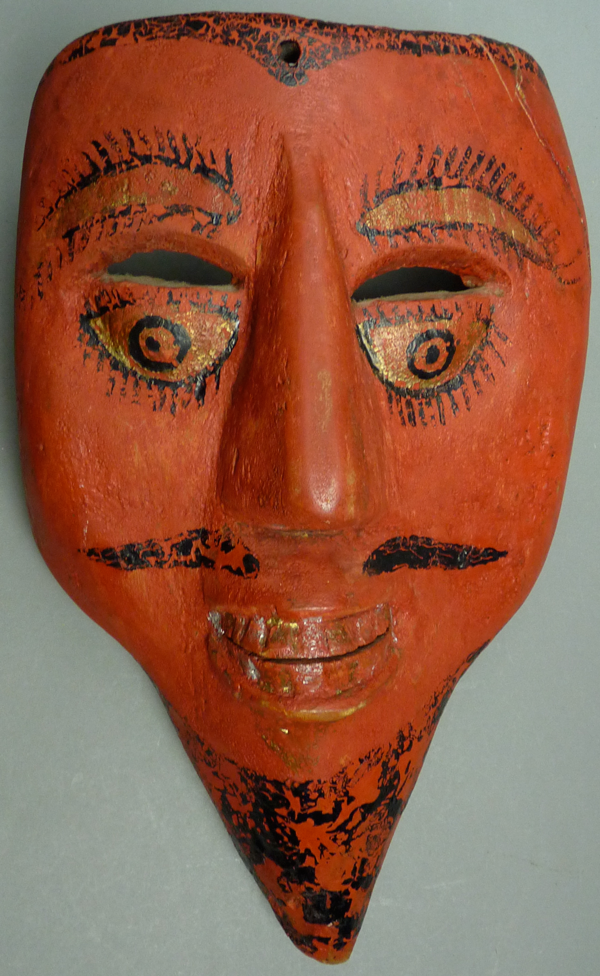
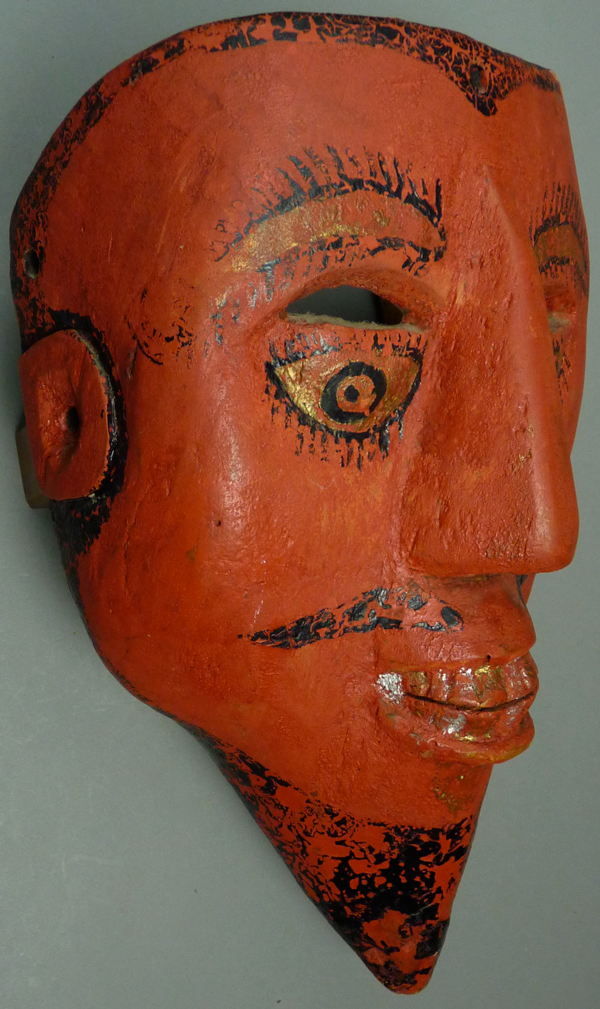
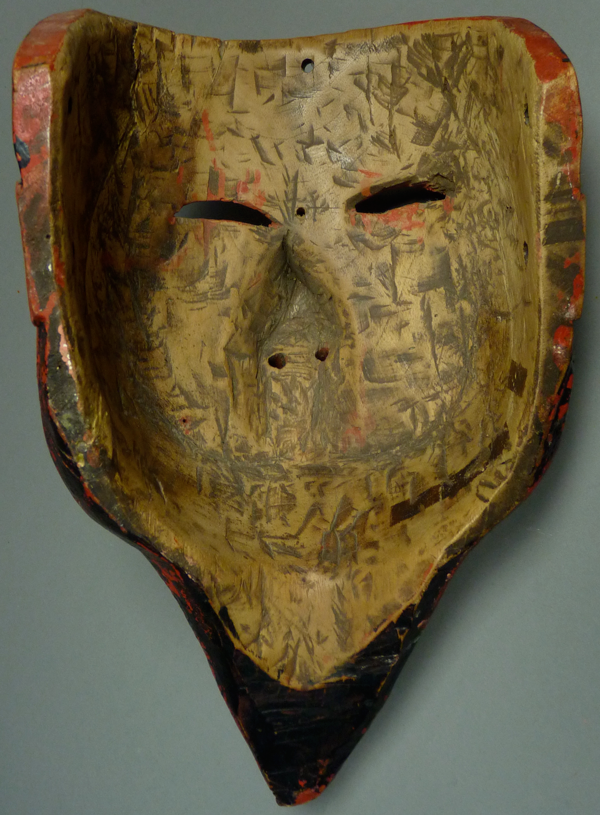


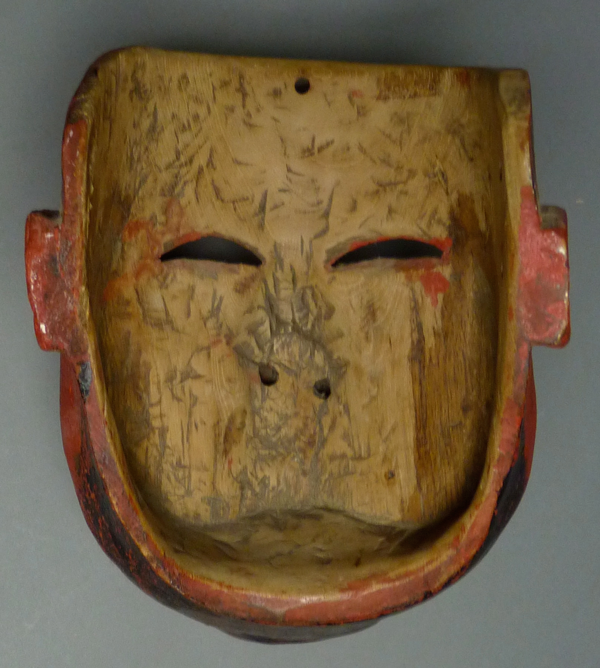
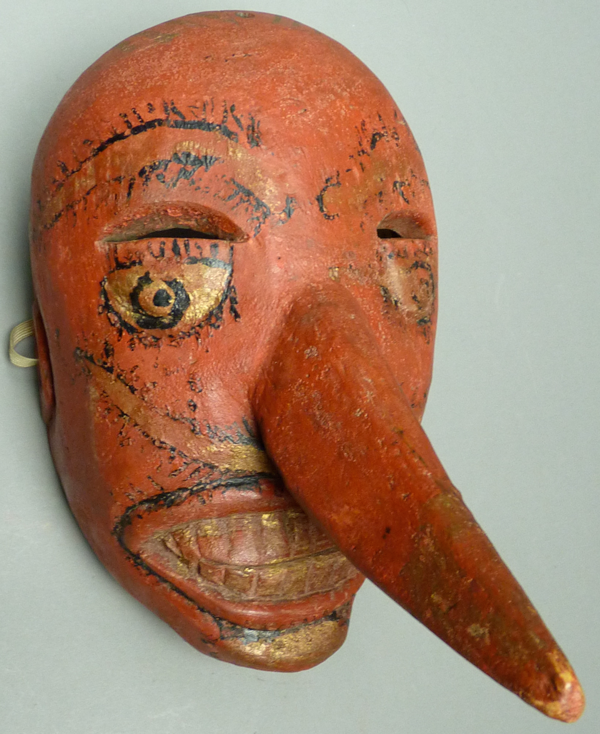
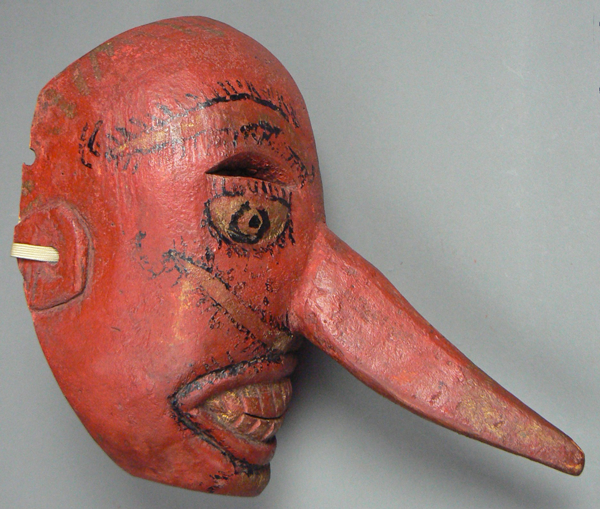
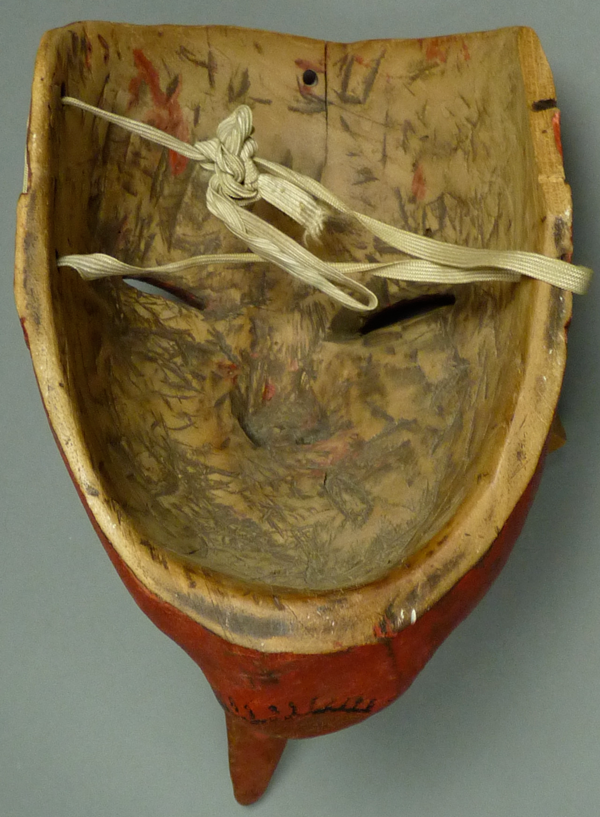
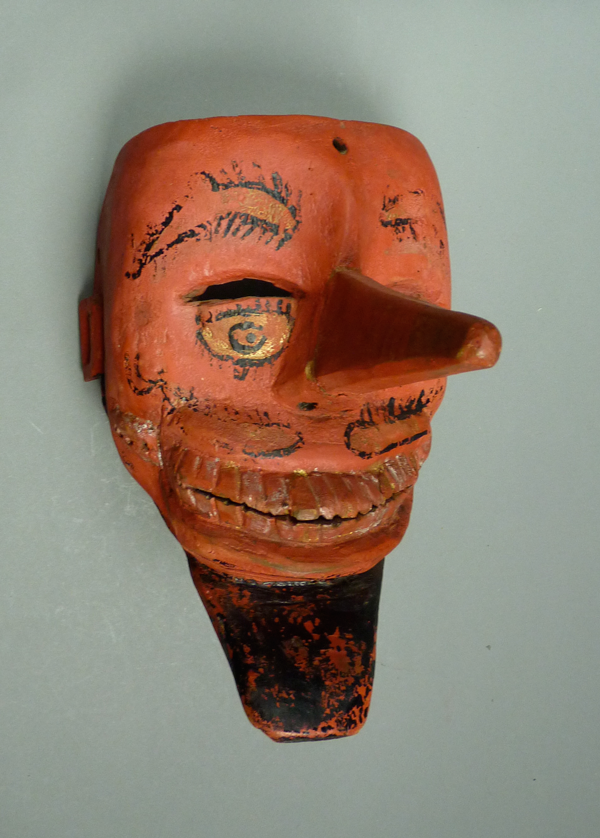

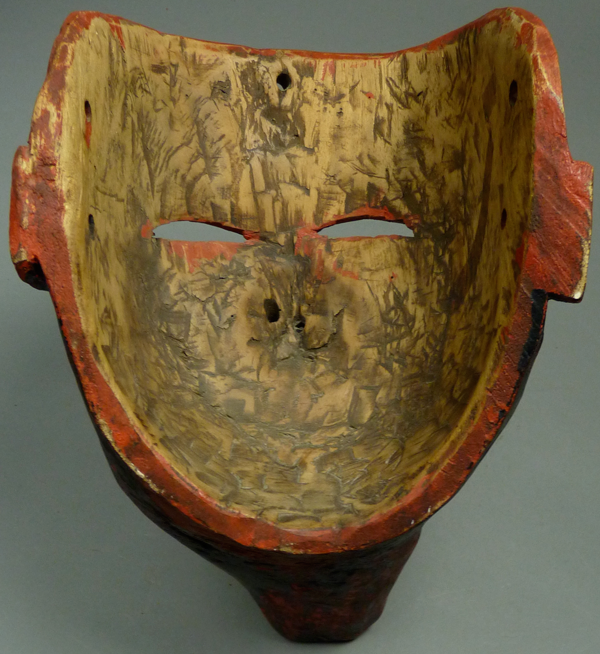

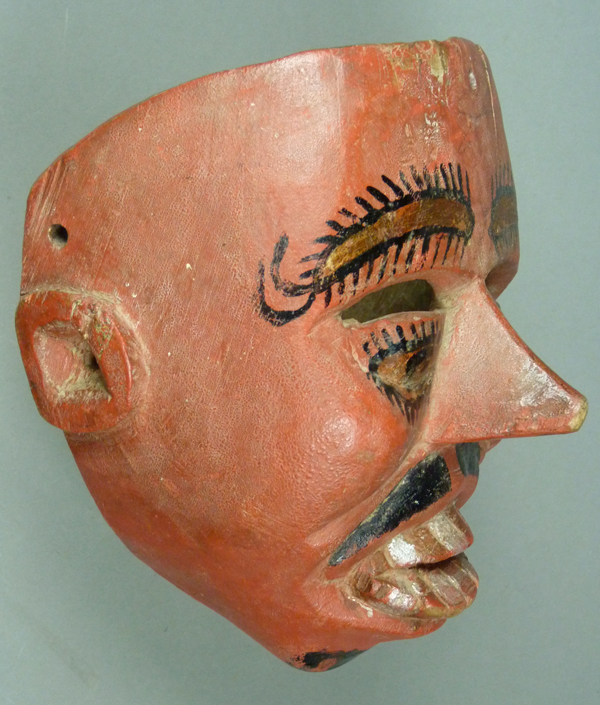

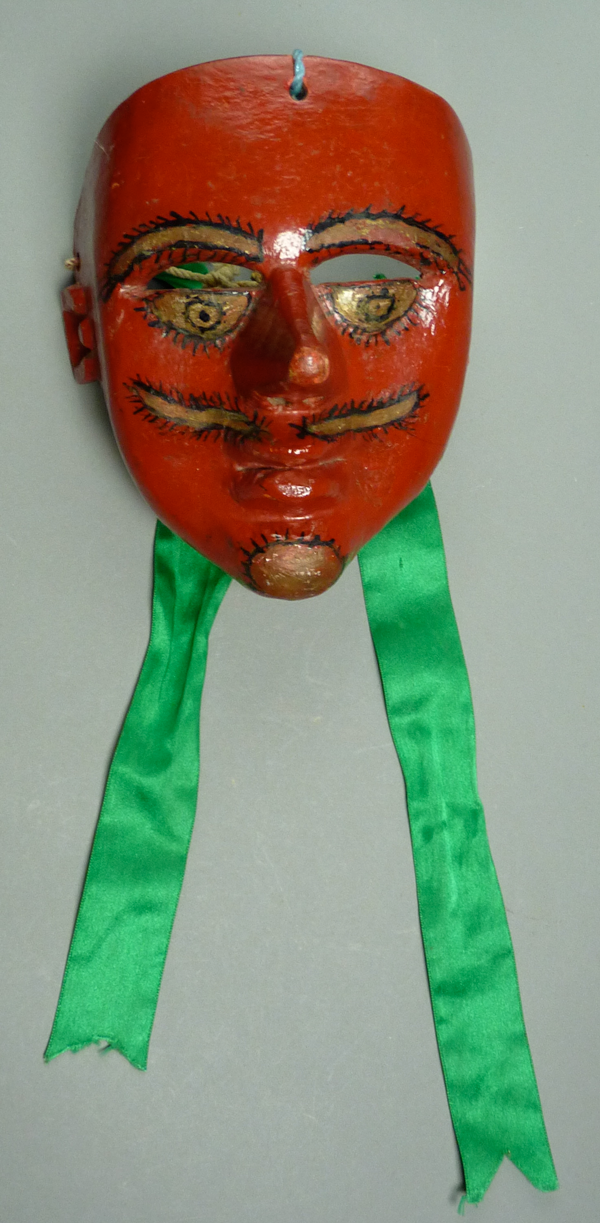
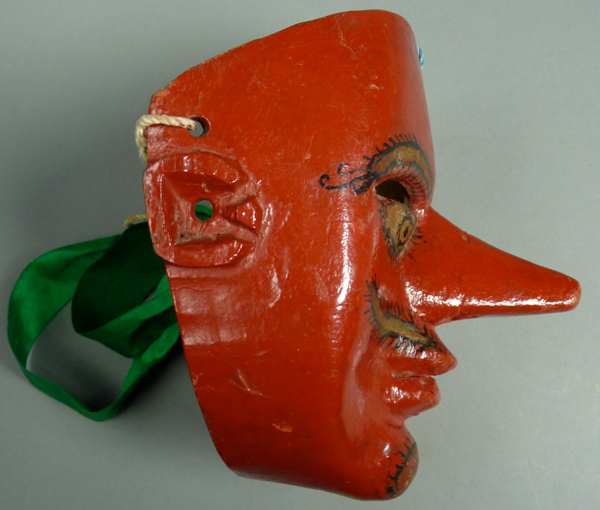
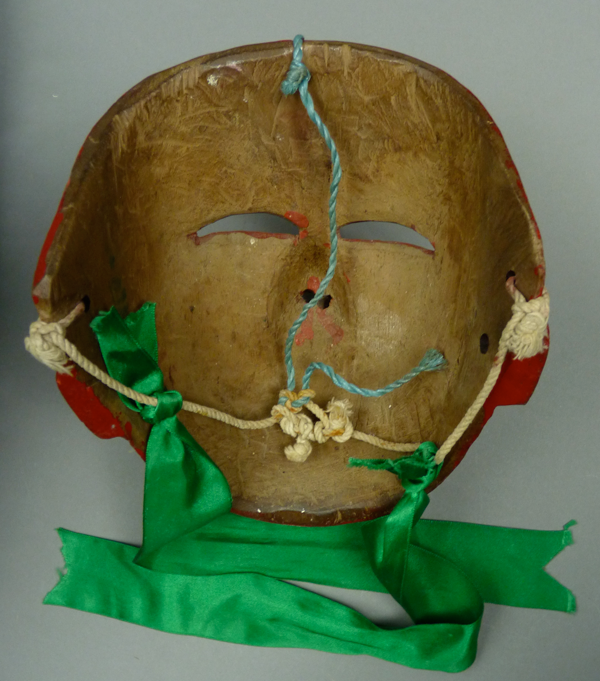
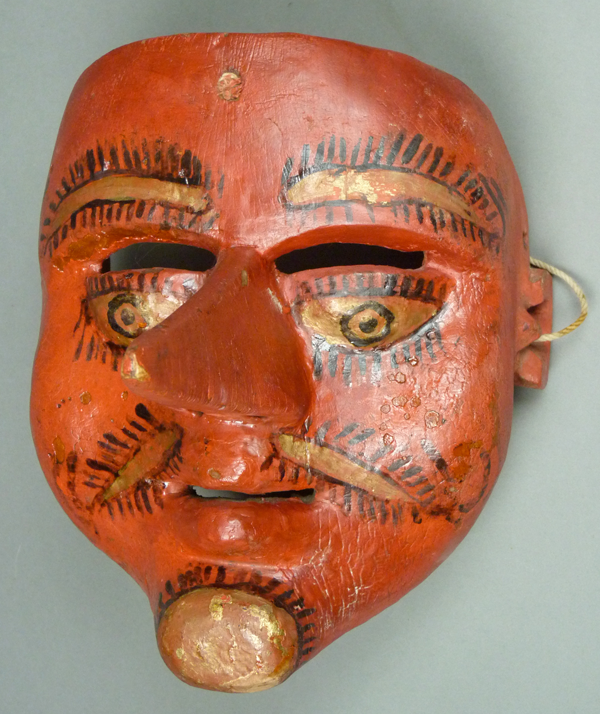

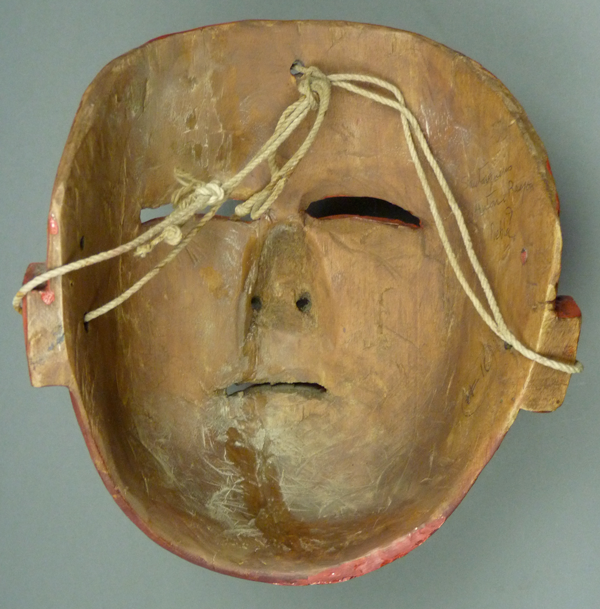
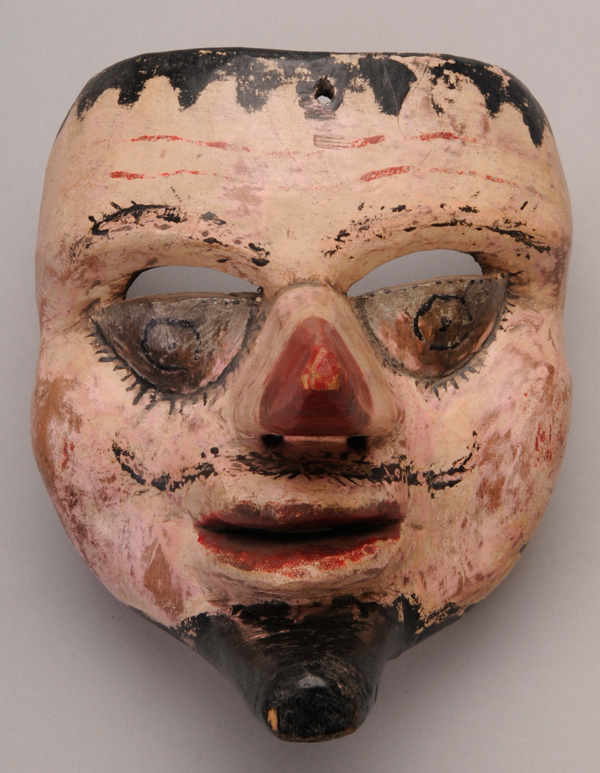
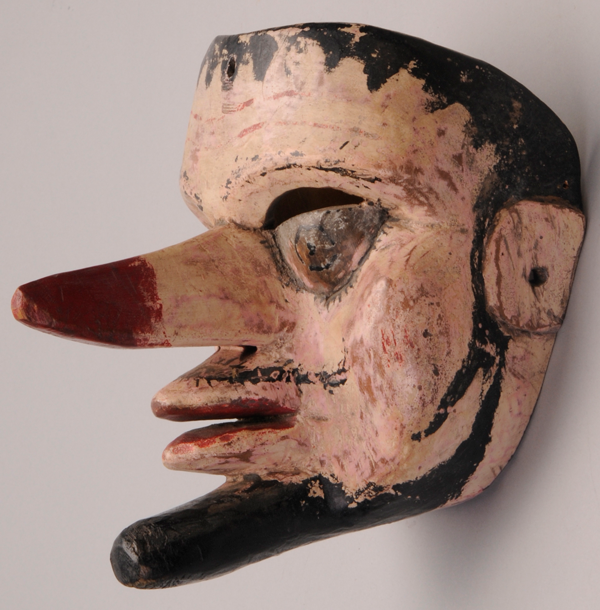

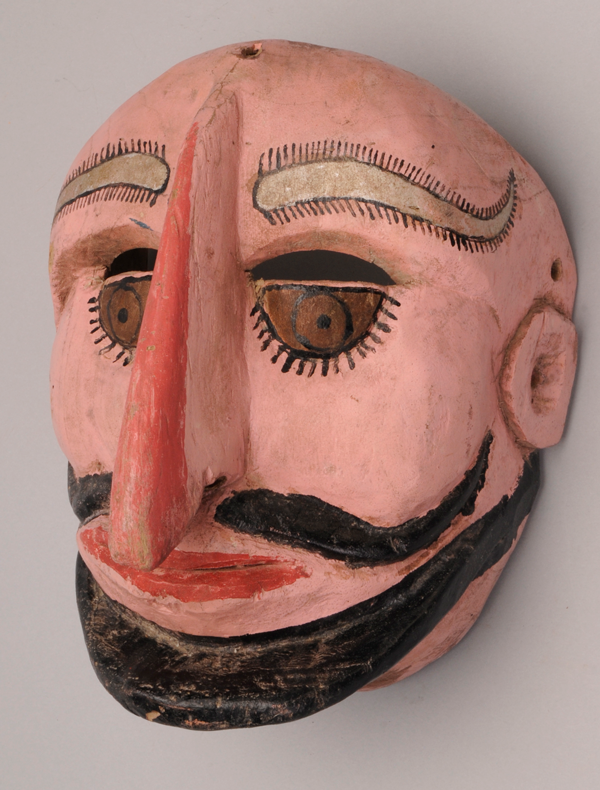
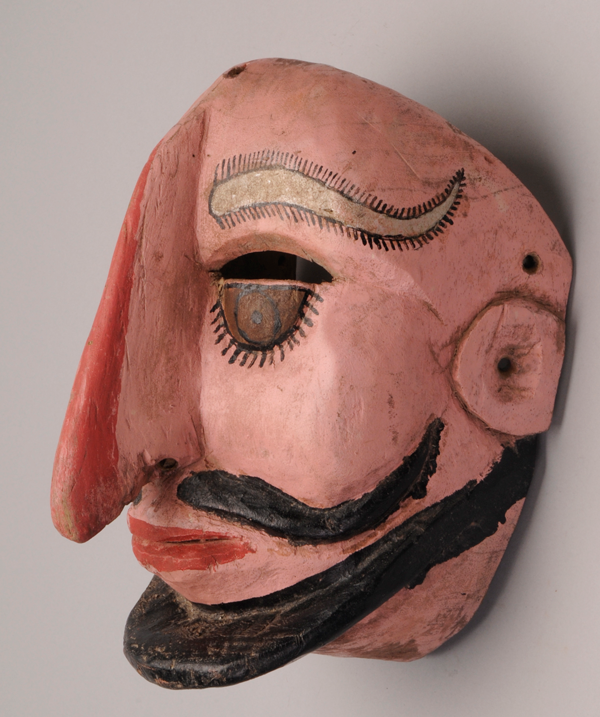

AL THE MASKS ARE QUITE BEAUTIFUL, PARTICULARLY THE PILATOS. DO YOU KNOW WHEN THEY WERE CARVED?
Hi John
The large masks must date to the 60s or 70s, the smaller ones to the 1980s. Not so old but so elegant!
Thanks for your interest.
Bryan